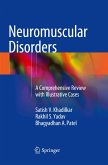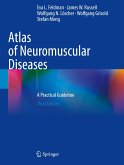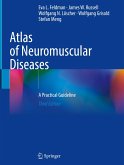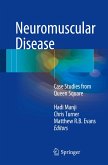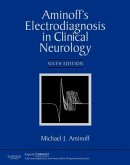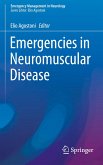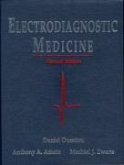Satish V. Khadilkar, Rakhil S. Yadav, Bhagyadhan A. Patel
Neuromuscular Disorders
A Comprehensive Review with Illustrative Cases
Satish V. Khadilkar, Rakhil S. Yadav, Bhagyadhan A. Patel
Neuromuscular Disorders
A Comprehensive Review with Illustrative Cases
- Gebundenes Buch
- Merkliste
- Auf die Merkliste
- Bewerten Bewerten
- Teilen
- Produkt teilen
- Produkterinnerung
- Produkterinnerung
This book provides a concise overview of the diagnosis, therapy, and recent updates of various neuromuscular disorders in tabulated form and with illustrative cases. Treating neuromuscular disorders requires a sound, step-by-step clinical approach based on differential diagnosis and laboratory investigations. Yet to date, no single, compact book offers all the relevant information about managing these disorders. This book fills that gap, presenting the state of the art in the field and addressing practical problems with their solutions. Each chapter covers disorder characteristics, clinical…mehr
Andere Kunden interessierten sich auch für
![Neuromuscular Disorders Neuromuscular Disorders]() Satish V. KhadilkarNeuromuscular Disorders104,99 €
Satish V. KhadilkarNeuromuscular Disorders104,99 €![Atlas of Neuromuscular Diseases Atlas of Neuromuscular Diseases]() Eva L. FeldmanAtlas of Neuromuscular Diseases213,99 €
Eva L. FeldmanAtlas of Neuromuscular Diseases213,99 €![Atlas of Neuromuscular Diseases Atlas of Neuromuscular Diseases]() Eva L. FeldmanAtlas of Neuromuscular Diseases209,99 €
Eva L. FeldmanAtlas of Neuromuscular Diseases209,99 €![Neuromuscular Disease Neuromuscular Disease]() Neuromuscular Disease56,99 €
Neuromuscular Disease56,99 €![Aminoff's Electrodiagnosis in Clinical Neurology Aminoff's Electrodiagnosis in Clinical Neurology]() Michael J. AminoffAminoff's Electrodiagnosis in Clinical Neurology279,99 €
Michael J. AminoffAminoff's Electrodiagnosis in Clinical Neurology279,99 €![Emergencies in Neuromuscular Disease Emergencies in Neuromuscular Disease]() Emergencies in Neuromuscular Disease27,99 €
Emergencies in Neuromuscular Disease27,99 €![Electrodiagnostic Medicine Electrodiagnostic Medicine]() Daniel DumitruElectrodiagnostic Medicine317,99 €
Daniel DumitruElectrodiagnostic Medicine317,99 €-
-
-
This book provides a concise overview of the diagnosis, therapy, and recent updates of various neuromuscular disorders in tabulated form and with illustrative cases. Treating neuromuscular disorders requires a sound, step-by-step clinical approach based on differential diagnosis and laboratory investigations. Yet to date, no single, compact book offers all the relevant information about managing these disorders. This book fills that gap, presenting the state of the art in the field and addressing practical problems with their solutions. Each chapter covers disorder characteristics, clinical differentiating points, relevant investigations, and their interpretation, available genetic testing, best management approaches, and counseling. Illustrative cases provide valuable insights, while extensive tables and illustrations will be helpful for the Neurologist, neuromuscular specialist, Neurology resident, Physician, and physiotherapist.
Produktdetails
- Produktdetails
- Verlag: Springer / Springer Nature Singapore / Springer, Berlin
- Artikelnr. des Verlages: 978-981-97-9009-8
- 2. Aufl.
- Seitenzahl: 876
- Erscheinungstermin: 29. Dezember 2024
- Englisch
- Abmessung: 241mm x 160mm x 49mm
- Gewicht: 1563g
- ISBN-13: 9789819790098
- ISBN-10: 9819790093
- Artikelnr.: 71526024
- Herstellerkennzeichnung
- Springer-Verlag GmbH
- Tiergartenstr. 17
- 69121 Heidelberg
- ProductSafety@springernature.com
- Verlag: Springer / Springer Nature Singapore / Springer, Berlin
- Artikelnr. des Verlages: 978-981-97-9009-8
- 2. Aufl.
- Seitenzahl: 876
- Erscheinungstermin: 29. Dezember 2024
- Englisch
- Abmessung: 241mm x 160mm x 49mm
- Gewicht: 1563g
- ISBN-13: 9789819790098
- ISBN-10: 9819790093
- Artikelnr.: 71526024
- Herstellerkennzeichnung
- Springer-Verlag GmbH
- Tiergartenstr. 17
- 69121 Heidelberg
- ProductSafety@springernature.com
Dr. Satish V. Khadilkar is one of the first few Indian neurologists to have pursued the subspeciality of neuromuscular disorders, a field in which he has made a mark in India and beyond. He was the first to describe a new clinical sign, the "Hip abduction sign," which has been included in international books. He has authored over 150 publications, written four books, and edited one on neurology. He has also been active in social work, serving as the trustee and secretary of the Muscular Dystrophy Society and as the national vice president of the Multiple Sclerosis Society of India. Dr. Rakhil S. Yadav passed his D.M. in neurology from the prestigious Grant Medical College and Sir J.J. Group of Hospitals and worked further as a lecturer in the same department. Subsequently, he trained in neuromuscular disorders in Paris. He is presently working as a consultant neurologist at Ahmedabad. He has been a faculty of neuromuscular symposia, is associated with the Annals of the Indian Academy of Neurology, and has contributed and participated in various book chapters and peer-reviewed indexed publications. Dr. Bhagyadhan A. Patel has the unique distinction of clearing MD and DNB Neurology from the prestigious Grant Govt. Medical College and Sir J.J. Group of Hospitals, Mumbai. He pursued his particular interest in neuromuscular disorders by publishing 20 articles in national and international peer-reviewed journals, contributing various book chapters in national-level neurology textbooks, and delivering lectures at national and international conferences on neuromuscular disorders.
Part I Approach to a Neuromuscular Case.- 1. Neuromuscular disorders: A clinical approach.- Part II Basic principles.- 2. Electrophysiology.- 3. Histopathology.- 4. Genetics.- 5. Immunotherapy.- 6. Rehabilitation.- Part III Motor weakness: Asymmetric: UMN and LMN signs and fasciculation.- 7. Motor Neuron Diseases (Amyotrophic Lateral Sclerosis).- Part IV Motor weakness: Asymmetric: LMN only.- 8. Polio / Post-polio syndrome.- 9. Hirayama disease and Other Focal Amyotrophies.- 10. Progressive muscular atrophy (PMA).- 11. Acute motor axonal neuropathy (AMAN).- 12. Multifocal motor neuropathy (MMN).- 13. Fascio-scapular muscular dystrophy (FSHD).- Part V Motor weakness: Symmetric: Proximal.- 14. Spinal Muscular atrophy (SMA).- 15. Porphyria.- 16. Congenital Myasthenic syndromes (CMS).- 17. Dystrophinopathies: Duchenne and Becker Muscular Dystrophies.- 18. Limb-Girdle Muscular Dystrophies (LGMD).- 19. Emery Dreifuss Muscular dystrophy (EDMD).- 20. Oculopharyngeal muscular dystrophy (OPMD).- 21. Congenital muscular dystrophies (CMD).- 22. Congenital myopathies.- 23. Inflammatory myopathies.- Part VI Motor weakness: Symmetric: Distal.- 24. Distal Hereditary Motor Neuropathy (dHMN).- 25. Distal myopathies.- 26. Myotonic dystrophies.- 27. Brown-Vialetto-Van Laere syndrome (BVVL).- Part VII Motor weakness: Fluctuating weakness.- 28. Myasthenia Gravis (MG).- 29. Lambert-Eaton myasthenic syndrome (LEMS) and myasthenia gravis Lambert-Eaton overlap syndrome (MLOS).- 30. Periodic paralysis.- Part VIII Motor weakness: Exercise intolerance.- 31. Metabolic myopathies.- Part IX Motor weakness: Muscle stiffness, cramps, spasms, rigidity, or contracture.- 32. Peripheral nerve hyperexcitability disorder: Neuromyotonia and Satoyoshi syndrome.- 33. Stiff person syndrome.- 34. Non dystrophic myotonias.- Part X Sensory motor weakness: asymmetric.- 35. Individual Mononeuropathies.- 36. Mononeuritis multiplex: Vasculitis (systemic, non-systemic) Neuropathies.- 37. Mononeuritis multiplex: Multifocal acquired demyelinating sensory and motor neuropathy (MADSAM).- 38. Mononeuritis multiplex: Hansen disease (leprosy).- 39. Chronic immune polyradiculopathy -Sensory (CISP), Motor (CIMP), Sensory-motor (CISMP).- 40. Compressive Radiculopathies.- 41. Brachial plexopathy.- 42. Lumbosacral plexopathy.- 43. Hereditary neuropathy with pressure palsy (HNPP).- Part XI Sensory motor weakness: Symmetric.- 44. Hereditary motor sensory neuropathies (HMSN)/ Charcot-Marie-Tooth disease (CMT).- 45. Guillain-Barré syndrome (GBS).- 46. Chronic inflammatory demyelinating polyradiculoneuropathy (CIDP).- 47. X-linked form of Charcot-Marie-Tooth disease (CMT X).- 48. Other Hereditary neuropathies 1.- 49. Other Hereditary neuropathies 2.- 50.Neuropathy secondary to systemic diseases.- Part XII Sensory.- 51. Miller Fisher syndrome (MFS).- 52. Distal acquired demyelinating symmetric (DADS) neuropathy.- 53. Paraproteinemic neuropathy.- 54.Sensory ganglionopathies.
Part I Approach to a Neuromuscular Case.- 1. Neuromuscular disorders: A clinical approach.- Part II Basic principles.- 2. Electrophysiology.- 3. Histopathology.- 4. Genetics.- 5. Immunotherapy.- 6. Rehabilitation.- Part III Motor weakness: Asymmetric: UMN and LMN signs and fasciculation.- 7. Motor Neuron Diseases (Amyotrophic Lateral Sclerosis).- Part IV Motor weakness: Asymmetric: LMN only.- 8. Polio / Post-polio syndrome.- 9. Hirayama disease and Other Focal Amyotrophies.- 10. Progressive muscular atrophy (PMA).- 11. Acute motor axonal neuropathy (AMAN).- 12. Multifocal motor neuropathy (MMN).- 13. Fascio-scapular muscular dystrophy (FSHD).- Part V Motor weakness: Symmetric: Proximal.- 14. Spinal Muscular atrophy (SMA).- 15. Porphyria.- 16. Congenital Myasthenic syndromes (CMS).- 17. Dystrophinopathies: Duchenne and Becker Muscular Dystrophies.- 18. Limb-Girdle Muscular Dystrophies (LGMD).- 19. Emery Dreifuss Muscular dystrophy (EDMD).- 20. Oculopharyngeal muscular dystrophy (OPMD).- 21. Congenital muscular dystrophies (CMD).- 22. Congenital myopathies.- 23. Inflammatory myopathies.- Part VI Motor weakness: Symmetric: Distal.- 24. Distal Hereditary Motor Neuropathy (dHMN).- 25. Distal myopathies.- 26. Myotonic dystrophies.- 27. Brown-Vialetto-Van Laere syndrome (BVVL).- Part VII Motor weakness: Fluctuating weakness.- 28. Myasthenia Gravis (MG).- 29. Lambert-Eaton myasthenic syndrome (LEMS) and myasthenia gravis Lambert-Eaton overlap syndrome (MLOS).- 30. Periodic paralysis.- Part VIII Motor weakness: Exercise intolerance.- 31. Metabolic myopathies.- Part IX Motor weakness: Muscle stiffness, cramps, spasms, rigidity, or contracture.- 32. Peripheral nerve hyperexcitability disorder: Neuromyotonia and Satoyoshi syndrome.- 33. Stiff person syndrome.- 34. Non dystrophic myotonias.- Part X Sensory motor weakness: asymmetric.- 35. Individual Mononeuropathies.- 36. Mononeuritis multiplex: Vasculitis (systemic, non-systemic) Neuropathies.- 37. Mononeuritis multiplex: Multifocal acquired demyelinating sensory and motor neuropathy (MADSAM).- 38. Mononeuritis multiplex: Hansen disease (leprosy).- 39. Chronic immune polyradiculopathy -Sensory (CISP), Motor (CIMP), Sensory-motor (CISMP).- 40. Compressive Radiculopathies.- 41. Brachial plexopathy.- 42. Lumbosacral plexopathy.- 43. Hereditary neuropathy with pressure palsy (HNPP).- Part XI Sensory motor weakness: Symmetric.- 44. Hereditary motor sensory neuropathies (HMSN)/ Charcot-Marie-Tooth disease (CMT).- 45. Guillain-Barré syndrome (GBS).- 46. Chronic inflammatory demyelinating polyradiculoneuropathy (CIDP).- 47. X-linked form of Charcot-Marie-Tooth disease (CMT X).- 48. Other Hereditary neuropathies 1.- 49. Other Hereditary neuropathies 2.- 50.Neuropathy secondary to systemic diseases.- Part XII Sensory.- 51. Miller Fisher syndrome (MFS).- 52. Distal acquired demyelinating symmetric (DADS) neuropathy.- 53. Paraproteinemic neuropathy.- 54.Sensory ganglionopathies.


